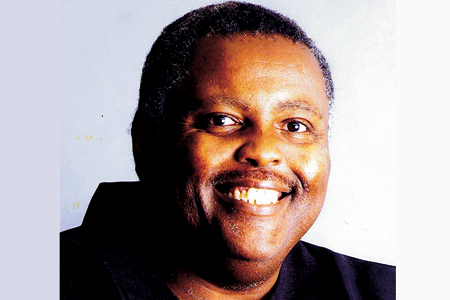
AUBREY BRUCE
I am freshly honored every year by the remembrance of the Brooklyn Dodgers #42 Jackie Robinson. But one thing I have to make perfectly clear. I hope and pray every year that African-Americans will have the positive impact on baseball as well as on their communities that they had during the 60’s, 70’s and 80’s. But alas it is not to be. The economic structure of today will not allow Black athletes to have a major social and economic influence on the sport. In November of 2011 the Connecticut Law Review published an article authored by Joanna Shepherd Bailey and George B. Shepherd saying that; “Major League Baseball has recently experienced two puzzling upheavals. First, the number of foreign players has grown to 28 percent of all players. At the same time the fraction of African-American players has declined, and is now at its lowest level in more than thirty years. The solution to the puzzle lies within the league itself. In 1965, MLB instituted two regulations that penalized domestic players: the draft and age minimums. Because the regulations applied only to U.S. players, teams shifted their scouting and development resources to foreign countries. Our empirical analysis, using a new data set, shows that the shift has caused growth in the numbers of foreign MLB players and a decline in U.S. players, especially harming disadvantaged groups such as African-Americans.
“The regulations violate the Civil Rights Act of 1964 in two ways. First, because they explicitly burden only U.S. players, they constitute intentional discrimination based on national origin. Second, because the regulations? impact falls disproportionately on African-Americans, the league has engaged in unlawful racial discrimination. The appropriate remedy is that the draft and age limits should be eliminated.”
H’mm, “Two regulations that penalized domestic players: the draft and age minimums.” The appalling high school dropout rates of African-American males almost is a sure indicator that most Black males don’t even meet the grade point average requirement in order to reach the minimum age to be considered for the MLB draft. However, the selection of players originating from the Caribbean enjoy regulations as well as a very politically conducive environment to assist MLB in retaining the services of athletes originating from these areas.
This process can only be described as “deregulatory” and collusive at best in regards to signing Black athletes. These covert tactics are relative to outsourcing American jobs overseas because less stringent regulations are in place and also to avoid any accusations of racial exclusion as defined by American Civil Rights laws because in many cases Latino players are regarded in many circles as players of color even if their immediate lineage does not still have shackle scars around their ankles. Initially the signing of Jackie Robinson signaled a shift in the economics in the sports world. But since then there has been a very obvious shift in the demographics within MLB itself. While we have spent the past six decades celebrating the crossing of the so-called color line, the boundary itself has been redrawn farther north of the Mason-Dixon Line while far below the southernmost point of the American border there is an active recruiting process in place. The report by Ms. Bailey and Mr. Shepherd goes on to say that, “Major League Baseball ended its official segregation in 1947, when Jackie Robinson shattered professional baseball‘s color barrier. A new era dawned in which, over the next two decades, African-American players streamed into the league, with many becoming the league‘s best players. However, in the late 1970s, MLB began to experience two fundamental shifts that have changed the face of baseball. First, although MLB teams hired only a handful of foreign players in the late 1940s, they now import almost half of their players from other countries: 46 percent of current major and minor league professional baseball players, mostly Latinos, in 2010 were born outside the United States. Second, in 2010, 28 percent of major league players were from Latin America. Third, the fraction of foreign players in minor league baseball is even higher; 48 percent of minor league players are from outside the United States. Necessarily, at the same time, the number of U.S.-born players has declined equivalently. In a stunning reversal of the trend that Jackie Robinson started, professional baseball has begun to re-segregate. The fraction of African-American players—defined as a player who is Black and was born in the United States—began to decline, and is now at its lowest point in more than thirty years, more than 50 percent lower than at its peak. Together, the two trends mean that players from Latin American have replaced African-Americans. In the 1960s, teams might have hired African-American players such as Willie Mays. Now, they are more likely to hire Latin players such as Manny Ramirez and Pedro Martinez.” Hey there are some key phrases that I don’t want you to miss boys and girls. “Major League Baseball ended its official segregation in 1947.” Official segregation means that racial bias is not as overt and obvious as it was in the past but trust me it is still there. But answer this question; if you were a scout would you be ready, willing and able to venture into the modern day war zones to recruit and evaluate athletes that might not even make it to draft day? We have to fulfill the promise of excellence and be obligated to ourselves before we can realistically expect any other segment of society to look out for us. Oh about the game. Pirates RHP James McDonald was blasted for seven runs in the 2nd inning before he was mercifully taken out of the game. The Pirates tried valiantly to come back but lost to the St. Louis Cardinals 10-6. So much for the mojo of Jackie Robinson working for the Pirates PNC Park at least for this day anyway.
(Aubrey Bruce can be reached at abruce@newpittsburghcourier.com or 412-583-6741.)